In transportation management, distinct organizational types exist, each with their own distinct challenges. This article will explore these archetypes within transportation management set-ups, along with their typical challenges and strategic insights on how each archetype can enhance their network’s efficiency and competitiveness.
A model based on expertise in transportation maturity
At 4flow, we regularly conduct transportation management (TM) maturity assessments for businesses in diverse industries. In these projects, our team evaluates an organization’s current TM maturity and recommends tailored optimization measures with different horizons and impacts, offering a personalized approach to each organization’s unique situation.
In the process, we identified patterns in terms of TM maturity and optimization measures. We’ve used this information to identify four common archetypes.
Identify your organization and find suggestions to improve efficiency and cost structures in transportation management tailored to archetype-specific challenges.
The four archetypes
Using AI-based clustering of transportation management assessments, we identified four main maturity clusters:

Digital innovators

Established engineers

Emerging disruptors

Cost-conscious network optimizers

Digital innovators
- Digitization of TM: Exemplary
- Maturity of network structure: Advanced multi-level network
- TM organization: Centrally orchestrated
- Representative industries: Automotive OEM, FMCG
Digital innovators are at the forefront of transportation management and skillfully use advanced technologies like data analytics and artificial intelligence (AI). These organizations have centralized structures and highly automated, digitized processes, which allow them to manage their supply chains on a global scale.
These organizations should prioritize talent development, collaboration and partnerships to maintain their cutting-edge advantage.

Established engineers
- Digitization of TM: Modest to intermediate
- Maturity of network structure: Intermediate
- TM organization: Decentralized
- Representative industries: Machinery, durable consumer goods, automotive suppliers
Established engineers adopt a balanced approach to transportation management, navigating between legacy practices and emerging digital technologies. They prioritize digitization, carrier relationships, ongoing process optimization and substantial investments in talent development to improve operational efficiency.
To balance legacy practices and digital transformations, these organizations should focus on achieving data integrity, standardizing processes and embracing advanced technologies, among other measures.

Emerging disruptors
- Digitization of TM: Exemplary
- Maturity of network structure: Nascent
- Centralization of TM organization: Agile and flexibly orchestrated
- Representative industries: E-commerce, B2C consumer goods, food delivery
Emerging disruptors are agile later-stage startups, scale-ups and visionary entities that excel in disrupting supply chain norms through judicious digitization. They prioritize growing their market presence and customer base, strategically expanding their networks through symbiotic partnerships, seamlessly integrating cutting-edge technologies and maintaining operational agility for swift responses to market changes. Their networks are ever-changing due to ambitious growth paths with new regions and services.
Emerging disruptors’ challenges are rooted in their limited supply chain and transportation resources, a lack of industry-specific expertise and the rapidly evolving landscape of single-purpose systems that need to be integrated.
These pioneers in transportation innovation should concentrate – among other measures – on ensuring data integrity, implementing the right software, and fostering organizational growth. Importantly, they should focus on establishing a solid, functioning transportation backbone without excessive complexity, prioritizing timely delivery to their customers during their rapid expansion.

Cost-conscious network optimizers
- Digitization of TM: Limited
- Maturity of network structure: Limited
- Centralization of TM organization: Centrally synthesized
- Representative industries: Retail, FMCG
Cost-conscious network optimizers place a strong emphasis on fiscal efficiency while maintaining a balanced approach to digitization. Their primary focus revolves around securing transportation services at the most cost-effective rates. These organizations often exhibit limited integration between transportation management (TM) and neighboring areas, as well as a disconnect between freight cost purchasing and execution processes.
To maximize efficiency within budget constraints, these organizations have many available strategies. Among other measures, they should consider strengthening purchasing capabilities, implementing automation and improving collaboration.
Do you recognize your organization in one of the archetypes and want to explore further? We’re ready to support your organization with tailored strategies for transportation management.
Contact us to start a transformation for optimization and efficiency that aligns with your archetype, ensuring your organization is well-prepared for the challenges and opportunities ahead.
Authors

Hanka Smiejczak
Vice President
4flow consulting

Jonas Goldenstein
Principal and Head of Transportation & Networks Practice
4flow consulting
